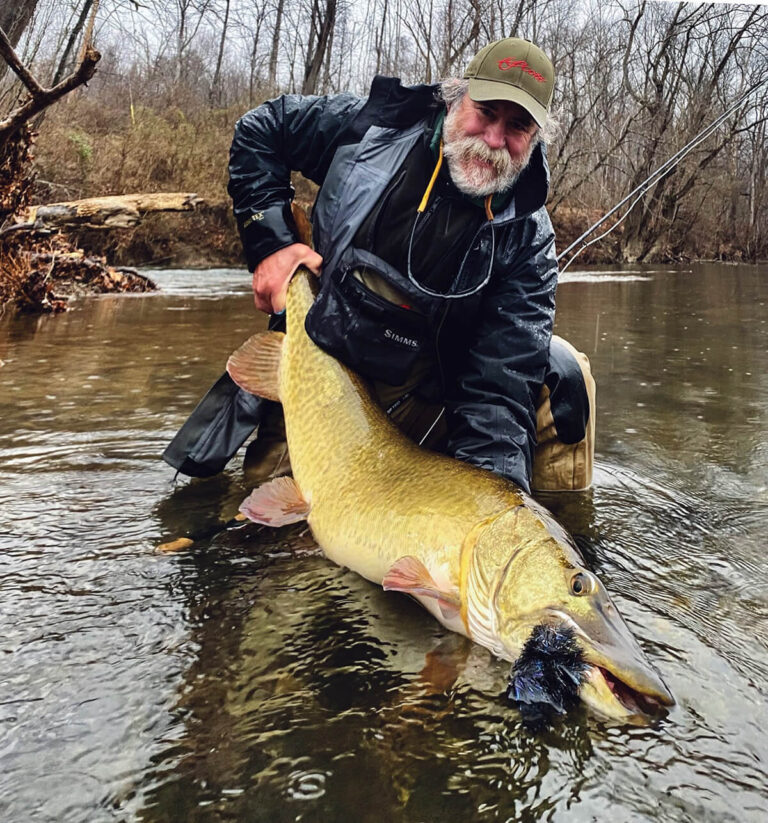Reading river features is crucial for fishing success. It helps anglers identify the right spots to catch fish and understand the behavior of the fish they’re targeting.
River fishing can be an invigorating yet challenging experience, even for the most experienced anglers. It requires more than just throwing a line into the water; it entails knowledge and understanding of the river ecosystem to make the most out of fishing.
One essential element of river fishing is knowing how to read the river features. Understanding the various characteristics of the river, such as currents, depth, and structure, can guide anglers to the right spots to catch fish. In this article, we’ll explore why it’s imperative to read river features and how to apply that knowledge to your fishing strategy.

Credit: www.moonshinerods.com
Reading River Currents And Flows
Explanation Of River Currents And How They Affect Fishing
When it comes to fishing, one of the most important environmental factors to consider is the river current. The current is determined by the speed and direction of the water flow, and it can have a significant impact on the fish and where they are located.
Understanding river currents is crucial for any angler looking to improve their chances of catching fish.
Here are the key points to keep in mind regarding river currents and their effect on fishing:
- The speed of the current determines where fish are located in the river. Fast currents push fish to the edges of the river, while slow-moving currents allow fish to accumulate in the center.
- Fish use the current as a way to conserve energy. They will typically swim upstream in areas with strong currents and downstream in areas with weaker currents.
- The current also affects the types of lures and baits that are most effective. Lures that mimic the movement of fish swimming upstream are most effective in strong currents, while slower lures are better suited for areas with weaker currents.
Detailed Discussion Of How To Read River Currents, Including Identifying The Main Flow, Seams, Eddies, And Other Subtle Changes In Water Movement
Identifying the main flow of a river is the first step in reading river currents. This is the fastest-moving part of the river and usually runs straight through the middle. Once you have identified the main flow, you can begin to look for the seams, eddies, and other subtle changes in water movement that can indicate where fish are located.
Here’s how to read river currents and identify these important features:
- Seams are the areas where two currents meet. These are often the most productive areas for fishing since they provide a transition zone for fish to move between fast and slow-moving water.
- Eddies are circular areas of calm water that form behind obstructions like rocks or logs. These areas are often where fish will rest or feed since they can conserve energy in the calm water.
- Look for changes in the color or texture of the water. These can indicate areas of slower or faster-moving water and are often good places to target for fishing.
- Pay attention to the direction of surface bubbles and debris. These can indicate the direction of the current and help you identify areas of slower water where fish are likely to be resting.
By learning to read river currents and identify these subtle changes in water movement, you can greatly increase your chances of catching fish. With a little practice and patience, you’ll be able to use the river’s natural flow to your advantage and become a more successful angler.
Identifying Underwater Structures
Overview Of Underwater Structures And Their Importance For Fishing Success
Successful fishermen understand that knowing the underwater terrain is crucial to catching fish. River and lake beds are full of hidden structures that provide habitat for fish. When fishing, understanding the underwater structures and their significance is essential in catching fish.
In this section, we will discuss identifying underwater structures and their importance in detail.
Detailed Discussion Of How To Identify Underwater Structures
- Drop-offs: Understanding drop-offs involves reading river features and observing where the water changes depth sharply. Drop-offs indicate changes in water depth from shallow to deep waters. Most fish species prefer deeper waters and gather around drop-offs as they offer protection from predators and access to food.
- Ledges: Ledges are underwater rock formations that create a drop-off from shallow to deep water. These hidden structures can harbor many fish species at once. Identifying them requires a keen eye and attention to details. Look for changes in current flow and water depth. The area between shallow and deep waters is the ideal location for a ledge.
- Riffles: Riffles are shallow, fast-moving areas of water that can provide essential clues about the structure of the riverbed. They are formed by rocks under the water, which makes them an excellent source of aquatic invertebrates that attract fish. Therefore, observing where riffles occur can help you identify the underwater structure of a river.
- Other key features: Other key underwater structures to look out for when fishing include submerged vegetation, trees, and boulders; all these structures provide shelter for fish to hide and access food.
By identifying underwater structures such as drop-offs, ledges, riffles, and other key features, anglers gain firsthand knowledge of a riverbed’s terrain and can position themselves optimally to catch fish. Recognizing underwater structures is essential to catch fish and to understand the aquatic ecosystem’s dynamics.
Recognizing Changes In Water Temperature
Explanation Of How Temperature Affects Fish Behavior And Movement
The water temperature affects the behavior and movement of fish to a great extent. Understanding this relationship is important for any angler looking to maximize their catch. Here are some key points to keep in mind:
- Fish are cold-blooded creatures, which means their internal body temperature is controlled by the temperature of the water around them.
- Warmer water temperatures lead to more active fish, as they have more energy to chase their prey.
- Colder water temperatures slow down a fish’s metabolism, making them less active and more lethargic.
Discussion Of How To Identify Changes In Water Temperature
Identifying changes in water temperature is crucial for successful fishing. Here are some ways to do so:
- Check the surface temperature of the water with a handheld thermometer or by using a temperature-reading feature on fish finders.
- Look out for any visible signs that could indicate changes in water temperature. For instance, steam or fog rising from the water surface during cooler temperatures.
- Use a depth finder to locate underwater thermoclines. These are areas where cooler and warmer water layers meet and can indicate temperature changes.
Understanding temperature changes in the water is essential for any angler looking to have a successful fishing outing. By adhering to these pointers, you will be well on your way to a bountiful catch.
Conclusion
Reading river features is an essential skill for any fishing enthusiast who wants to boost their chances of catching fish. River systems can be confusing and challenging to navigate, but when you learn how river flows affect the behavior of fish, you’ll become a master at locating them in no time.
Whether you’re a seasoned angler or a beginner, taking the time to understand river features can lead to an exciting and successful fishing experience. Remember to always pay attention to the river’s characteristics – its current, depth, and structure – and how they relate to the fish that inhabit it.
Being attuned to the river’s nuances can help you identify and exploit prime fishing locations that you may have otherwise overlooked. By honing your river-reading skills, you can enjoy more fulfilling and productive fishing trips, while appreciating the beauty of rivers and the fish that call them home.






